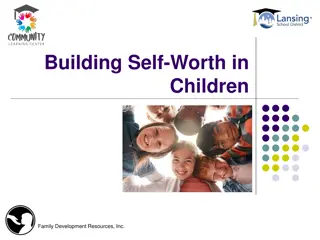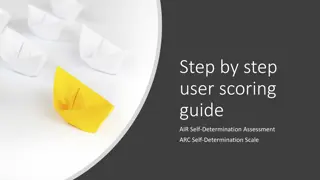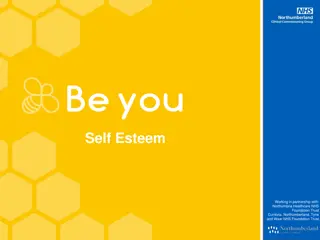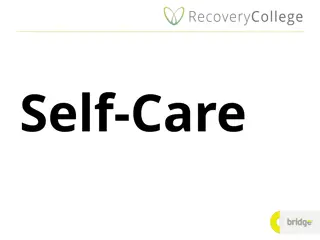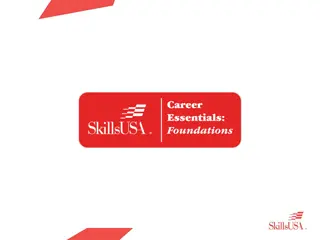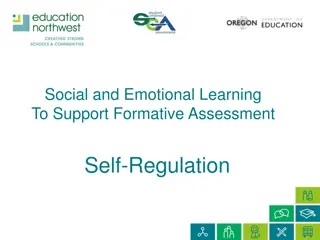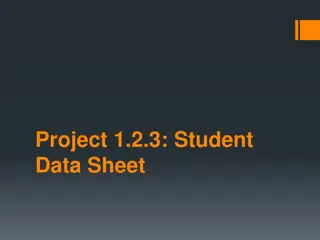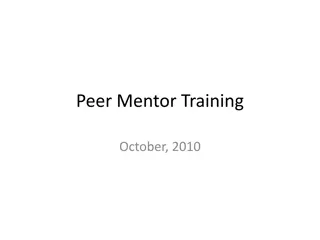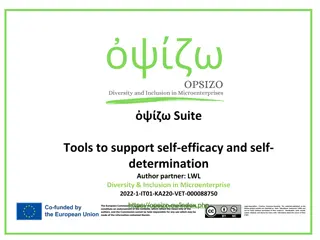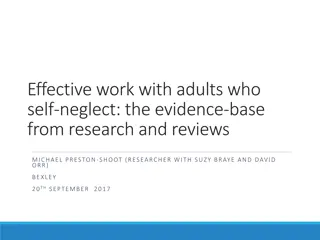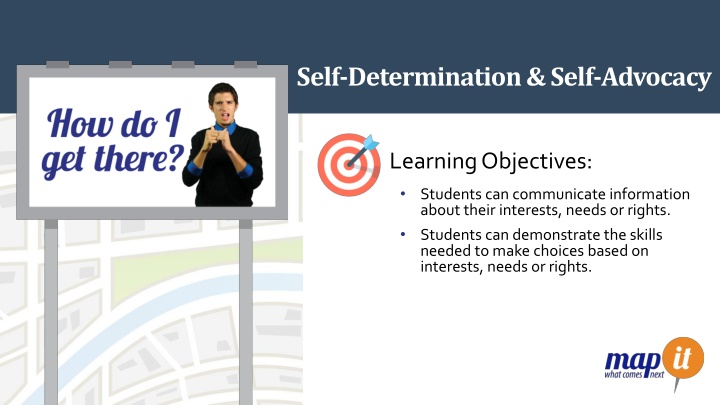
Empowering Self-Determination and Self-Advocacy Skills for Students
Enhance students' ability to express interests, needs, and rights while developing decision-making skills. Explore scenarios and discussions on autonomy and responsibilities. Includes activities and discussions promoting independence and self-advocacy.
Uploaded on | 2 Views
Download Presentation

Please find below an Image/Link to download the presentation.
The content on the website is provided AS IS for your information and personal use only. It may not be sold, licensed, or shared on other websites without obtaining consent from the author. If you encounter any issues during the download, it is possible that the publisher has removed the file from their server.
You are allowed to download the files provided on this website for personal or commercial use, subject to the condition that they are used lawfully. All files are the property of their respective owners.
The content on the website is provided AS IS for your information and personal use only. It may not be sold, licensed, or shared on other websites without obtaining consent from the author.
E N D
Presentation Transcript
Self-Determination & Self-Advocacy Learning Objectives: Students can communicate information about their interests, needs or rights. Students can demonstrate the skills needed to make choices based on interests, needs or rights.
Self- Determination & Self Advocacy: Dignity of Risk by Chris Lyons I want you to imagine that you live in a world where I am the boss of you . Kick-off Activity
Self- Determination & Self Advocacy: Dignity of Risk by Chris Lyons Discussion Questions: Scenario 1: Recall the first scenario where I am the sole boss of you. You voice what you want to do, but I make all of the decisions and accompany you everywhere you go. How does this first scenario make you feel? Would it be easy, or difficult, to have me in the driver s seat of your life? Why? Describe the negative impact(s) of this scenario. Classroom Activity Scenario 2: In the second scenario, you still have to ask my permission and continue to check in with me, but I no longer accompany you on the bus or at your friend s home. Depending on how well you perform, I can take away privileges at any moment. How do you feel now that you have a little more choice in hanging out with friends? How does hanging out with friends become more meaningful? Is this scenario more comfortable, or less comfortable, for you? Why?
Self- Determination & Self Advocacy: Dignity of Risk by Chris Lyons Discussion Questions: Scenario 3: Here, I am still the boss, but you no longer have to ask permission. However, if you make the wrong choice, or encounter a natural consequence based on your actions, I share responsibility. How does this scenario make you feel? What is the negative impact of having problems (or consequences of your actions) fall on your boss? Classroom Activity Scenario 4: In this final scenario, I am no longer the boss of you. You make all of your decisions and take responsibilities for any natural consequences based on your actions. How does it feel to be fully responsible in making choices based on your needs and wants? Why is it important to be responsible for your own actions and failures?
Self- Determination & Self Advocacy: Discussion Extension: Use the following images to explore different levels of choice making around needs and wants, potential consequences, and steps one can take to prevent or problem solve roadblocks. Classroom Activity
Map It Online Activity: Share a personal experience related to self-determination. How is Steven self-determined? How does he self-advocate? What is the first step to becoming self-determined? Self Determination
Self- Determination & Self Advocacy: Steps for decision making include: assessing options and the positive and negative consequences, executing a plan, and reflecting on outcomes. Examine the different problems on the Decision Making Scenario handout and analyze possible solutions. Listen to each problem, and with your group, evaluate the different options. Decision Making Activity Work with your group to decide the best decision for the problem. Share your decision and reasoning with peers.
What is the difference between self-determination and self- advocacy? Map It Online Activity: What does it mean to stick up for yourself? Does anyone want to share a personal experience? Self-Determination vs. Self-Advocacy Give an example of what it means to be self-determined. Give an example of what it means to self-advocate. How does knowing about yourself help you self-advocate your needs and rights?
Self- Determination & Self Advocacy: Set two or three self-advocacy or self-determination goals for the school year. Goals should related to: choice making, goal setting/attainment, self-advocacy, problem-solving, self-awareness, person-centered planning for an IEP, self-evaluation, interpersonal relationships, or self-initiation. Examples include: I will use a problem solving strategy to determine the best solution when hitting a roadblock. I will make choices based on my needs, preferences and interests. I will communicate my needs and request needed accommodation(s) during my work-based learning experience. Synthesis Activity- Goal Setting
Self- Determination & Self Advocacy: Exit Ticket Give an example of a personal choice you have made (or would like to make) based on your interests, skills, or goals. Share an I will . statement related to setting a self- determination or self-advocacy goal for the year.

